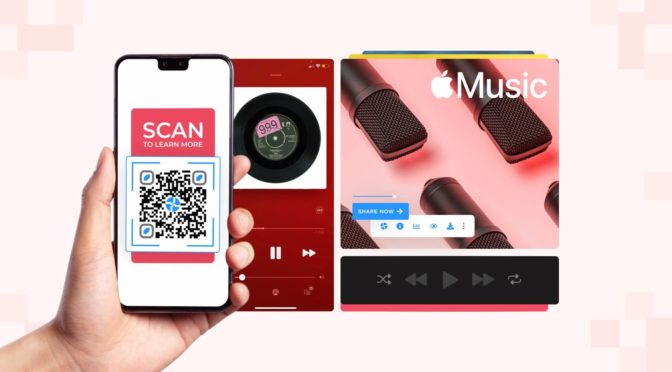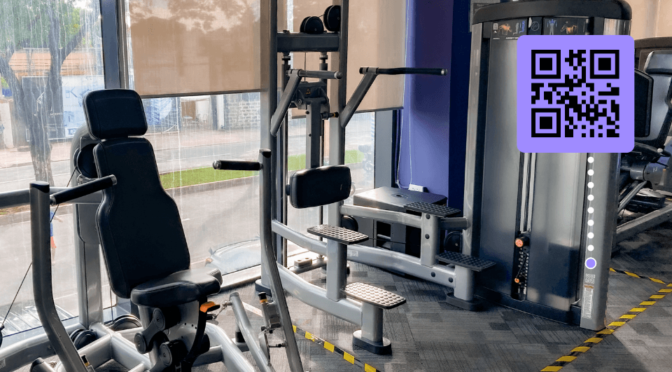Direct-to-consumer (DTC) brands are making significant investments in advertising and improving customer experience.
Instead of being dependent on retail outlets, DTC brands are taking the eCommerce route or using their outlet stores (think Nike and Puma’s flagship stores) to reach their consumers.
Top DTC brands like Lacoste, Red Bull, and Nike are using QR Codes to tap into one-to-one relationships and empower consumers to make informed decisions.
From leveraging QR Codes to help consumers track the freshness of the food to creating an engaging channel to educate customers on new products, top DTC brands have mastered the art of using QR Codes in their campaigns.
Let’s dive in.

Table of Contents
- # 10 Tyson Foods DTC QR Code food traceability
- #9 Sexy Hair QR codes on print ads for instant shopping
- #8 Hello Fresh’s DTC QR Codes to provide nutritional information
- #7 Lacoste QR codes on shoppable TV ads
- #6 Untuck It QR Codes for referral rewards
- # 5 Adidas DTC QR codes for increased customer engagement
- #4 Red Bull’s QR Codes on product packaging
- #3 Diesel’s DTC QR Codes track authenticity
- # 2 Blue Apron’s DTC QR Codes on food packaging
- #1 Nike QR Codes improve the in-store experience
- Future of QR Codes in DTC marketing strategy
Successful DTC QR Code campaigns that you can emulate
#10 Tyson Foods initiate DTC QR Code food traceability

Tyson Foods needed to raise awareness about food safety amongst consumers. They wanted to make sure that the food consumers purchase is fresh and safe to ensure the highest safety standards.
They added location-based QR Codes on their chicken products enabling shoppers to scan the product and check its details. Consumers could trace the origin of the products and find out when the product entered the store, depending on their location.
They were able to increase consumer confidence by being transparent about their production, storage, and shipment of their products.
#9 Sexy Hair used QR codes on print ads for instant shopping
In an attempt to drive up sales and engage magazine readers, Sexy Hair placed website QR Codes on their Cosmopolitan magazine ads. These Scan-to-shop ads’ allowed consumers to scan the QR Code and visit the e-commerce site where they could make a purchase.
By creating an accessible advert targeted at their audience, Sexy Hair built a seamless shopping experience and drove impulse purchases.
Also read: How to create a QR Code for a magazine
#8 Hello Fresh uses DTC QR Codes to provide nutritional information

Hello Fresh, a healthy meal kit service, used QR Codes to initiate a wellness experience.
Each recipe kit of Hello Fresh comes with a unique QR Code that consumers can scan to get nutritional information about the meal. This nutritional information redirects to their partner app, Noom, that provides customized weight loss meal plans.
Nutritional information from Hello Fresh is logged and updated to consumers’ Noom weight loss plan.
#7 Lacoste leverages QR codes on shoppable TV ads

Lacoste collaborated with NBC Universal to advertise its apparel through DTC QR codes via shoppable TV ads during the French Open finals.
During crucial moments of the match, a QR Code popped up on the bottom of the TV screen.
Tennis aficionados could scan this and shop the Lacoste X Novak Djokovic Collection while watching him play at the same time.
NBC reported that there is a 30% increase in conversion rate than the e-commerce benchmark.
#6 Untuck It used QR Codes for referral rewards
Untuck It placed Coupon QR Codes as a part of their print advertisements in the local New York newspapers.
After scanning the QR Code, consumers redirect to a referral website. As a part of their referral program, if a consumer refers someone to the company, they receive a 10% discount off their purchase, which then gets you $20 off your next purchase.
This way, coupon QR Codes can have loyalty and rewards programs with active referral business which helps them market their products to a broader audience.
#5 Adidas DTC QR codes for increased customer engagement

Adidas leveraged QR Codes on its Pulsebeat HD shoes to increase customer engagement.
In partnership with Spotify, Adidas put a QR code on the tongue that links directly to a custom playlist based on where the customer is in the world, ensuring every runner is ready to move. By scanning the QR Code customers can launch Spotify and unlock exclusive playlists.
RELATED: Find out how you can increase customer engagement using a Twitter QR Code
#4 Red Bull’s QR Codes on product packaging

Red Bull started a new digital marketing campaign to engage its consumers by integrating QR Codes into their packaging.
Upon scanning the QR Code, consumers could download a gaming app through which they get access to exclusive content. The interactive game was fun and engaged consumers, even post-purchase.
Create an app download QR Code
The winners of the game were even given free tickets to Red Bull’s events.
#3 Diesel’s DTC QR Codes track authenticity on clothing labels

Diesel incorporated heat printed QR Codes on its cloth label on every pair of Diesel jeans.
When the QR Code was scanned, consumers were redirected to a website called www.certilogo.com where they could enter the code to validate the authenticity of your jeans before or after purchase.
These QR Codes had call-to-action frames like ‘Scan for Authenticity.’ Having such CTA frames help consumers easily track these products and also assures them that brands are making an effort to provide genuine products.
#2 Blue Apron’s DTC QR Codes on food packaging

Even though there are sites that help consumers recycle items in a food box, it can get confusing. Blue Apron, a food delivery company, wanted to change that and make consumers aware of how they could recycle their boxes.
Blue Apron added QR Codes on each of its delivered items which when scanned, gave access to a smart guide. The QR Code redirected to a downloadable PDF document that helped consumers recycle and find nearby stores that accept these recyclable items.
#1 Nike QR Codes improve the in-store experience

Nike has some of the best QR Code practices amongst DTC brands. The Nike app accounted for nearly 40% of its online revenue in the year 2018.
In one of their stores in Los Angeles, they offered shoppers a Nike Unlock box. Nike members scanned the QR code to unlock a new, free product from a vending machine, such as a pair of Nike socks. These QR Codes became a powerful tool for engagement.
In its other retail stores, Nike has combined proximity marketing and QR Codes to give timely rewards to consumers. With the help of proximity marketing, they can recognize a consumer in the store. An in-app message is sent to the consumer to unlock a coupon.
Consumers can also reach out to store associates to scan their member QR Codes and avail offers like free month workout classes.
At Nike’s flagship store, consumers can even shop from mannequins.
By scanning a QR Code placed on the base of the mannequin, consumers can choose all in-store variants of the dress in different sizes and colors. Consumers can then request the items through the app to be sent to the fitting rooms.
By having location features on all these QR codes, Nike can evaluate which mannequins, which stylist’s work, which part of the stores are getting the most attention and engagement in various cities.
Brands like Nike use a QR Code management software to create QR Codes, track data, and manage them. Using this information, brands can create and shape their marketing campaigns and improve customer experience.
Future of QR Codes in DTC marketing strategy
We saw how DTC brands with the help of QR Code technology are successfully driving sales by improving customer experience.
DTC brands with this digital approach through QR Codes can leverage numerous ideas for their future marketing campaigns.
- Consumers want to buy things directly from brands rather than retailers. As consumers connect through QR Codes, brands can find consumer interests through quality interactions.
- Through QR Codes, brands can evade the risk of counterfeit goods
- Brands can collect accurate first-party data from consumers.
- QR codes directing to customized landing pages and e-commerce websites can help brands have an edge over their competitors.
- Brands can create data-driven personalized campaigns and meet consumers’ expectations. DTC brands can have complete control over the consumer experience from beginning to the end of their sales cycle.
DTC brands are evolving. And so are their consumers.
To meet new demands, having different types of QR Codes and a suitable QR code management system can come in handy. The combination of QR Codes with traditional marketing strategies can ensure a brand’s longevity in an already crowded space.











